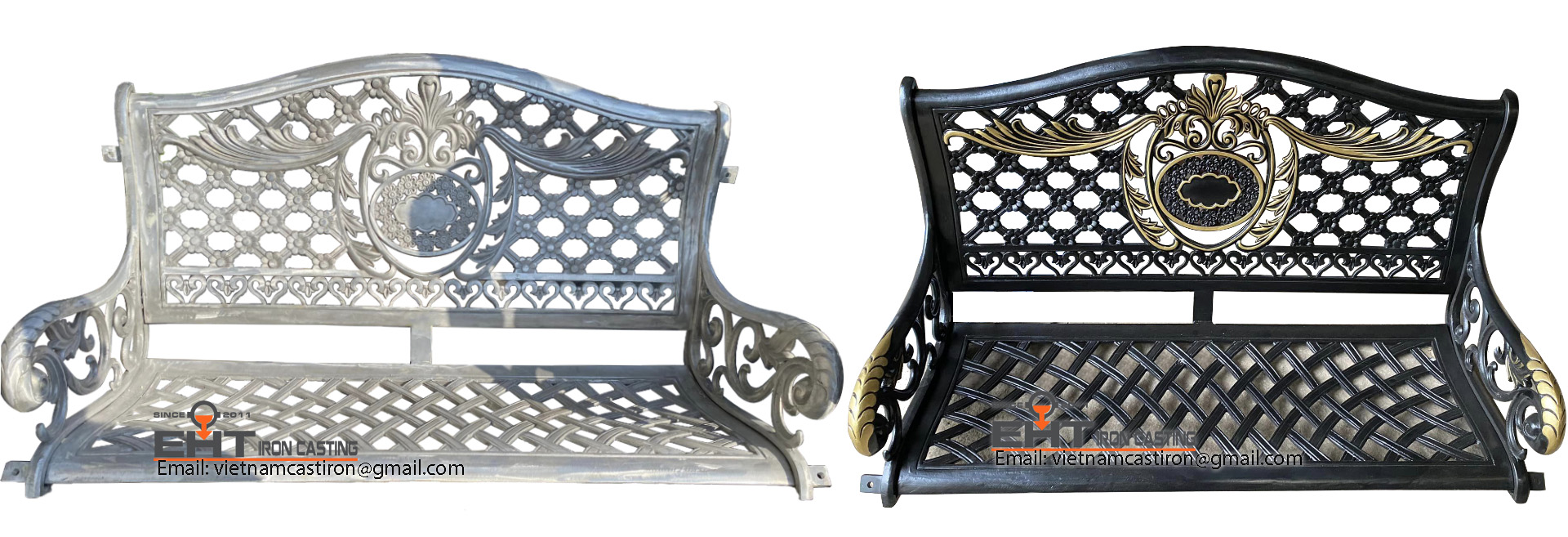
Aluminum casting foundry in Viet Nam
Aluminums is widely applied in many different industrial applications, not only of its lightweight, versatility but the resistance capability to corrosion. EHT’s aluminums production satisfy different customer requirements. From very small pieces like the aluminum ornamental parts to large partaluminum castings s like the aluminum outdoor table and chairs or aluminum lamp post and benches …
EHT company can meet all your demands from a simple process to super detailed and intricate products. We offer high quality surface finish, high strength products and good price.
Here are some samples of aluminum casting products:
 |
 |
 |
 |
 |
 |
 |
 |
 |
 |
 |
 |
 |
 |
 |
 |
 |
 |
The key advantages of aluminum casting include:
=> Versatile Surface Finishes
=> Lightweight yet Strong
=> Diverse Range of Surface Finishes
=> Corrosion Resistance
=> Complex Part Production
A Brief Overview of Cast Aluminum And Aluminum Casting
Cast aluminum is the process of melting aluminum and pouring it into a mold to acquire the required shape.
Aluminum casting is the general term that encompasses various casting processes used to create cast aluminum components.
Aluminum casting is a popular manufacturing method due to the numerous advantages offered by aluminum as a material.
It is lightweight, corrosion-resistant, has good thermal and electrical conductivity, and can be easily machined.
Below are the steps used to create the aluminum casting.
- Pattern Creation: A pattern is a replica of the required part, and is created using materials like wood, plastic, or metal.
- Mold Preparation: The pattern is placed in a flask, and molding material such as sand or plaster is packed around it to create the mold cavity. The mold can be made of a single piece (one-part mold) or divided into two halves (two-part mold).
- Pattern Removal: The pattern is removed from the mold, leaving behind a cavity that represents the desired shape of the part.
- Melting and Pouring: Aluminium is melted in a furnace and brought to the desired pouring temperature. The molten aluminum is then poured into the mold cavity through a gating system, which helps in controlling the flow of metal.
- Solidification: The molten aluminum cools to room temperature then it solidifies within the mold cavity and then it acquired the required shape.
- Cooling and Removal: After the aluminum has solidified, the mold is cooled to facilitate the solidification process. Once the mold is cooled then it is opened, and the cast aluminum part is removed.
- Finishing Operations: The cast aluminum part may undergo various finishing operations, such as trimming excess material, removing any imperfections, machining, surface treatment (e.g., painting, anodizing), and quality inspection.
Each process has its advantages and is chosen based on factors such as part complexity, desired quantity, surface finish requirements, and cost considerations.
or email us: This email address is being protected from spambots. You need JavaScript enabled to view it.
Kindly check below video for reference of our aluminum casting ability.


